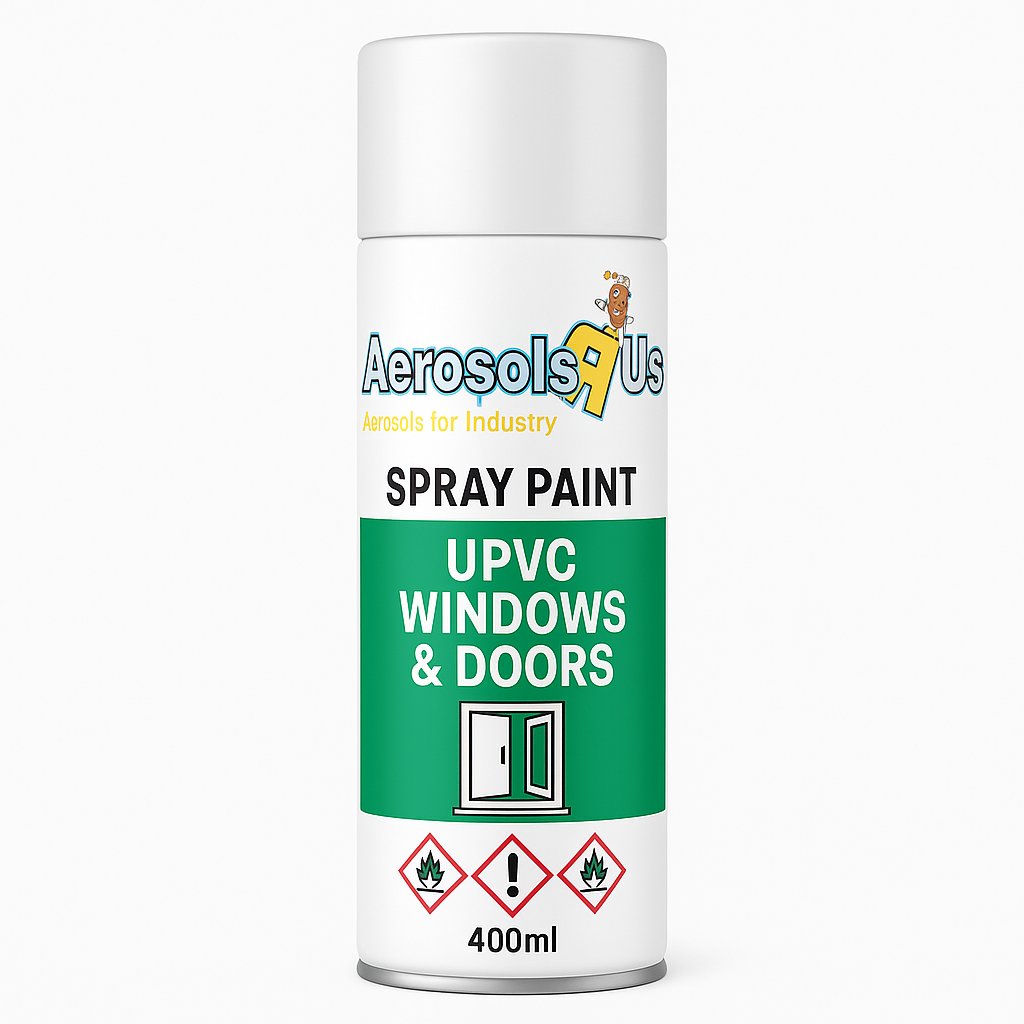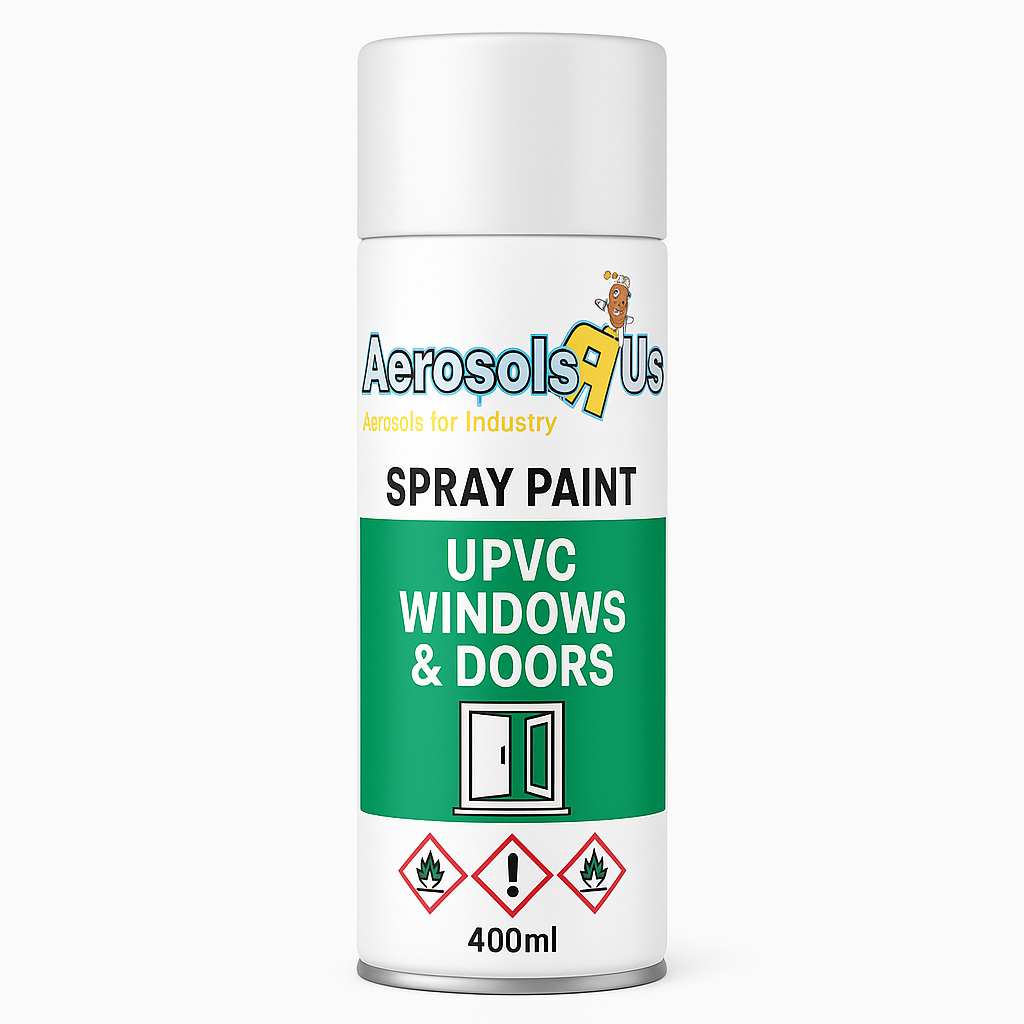Step by Step Guide - How to Spray Upvc Windows and Doors.
Transform tired UPVC windows and doors with a smooth, long-lasting factory finish using our professional spray paints.
Difficulty: Moderate • Time: ~180 minutes per window/door
-
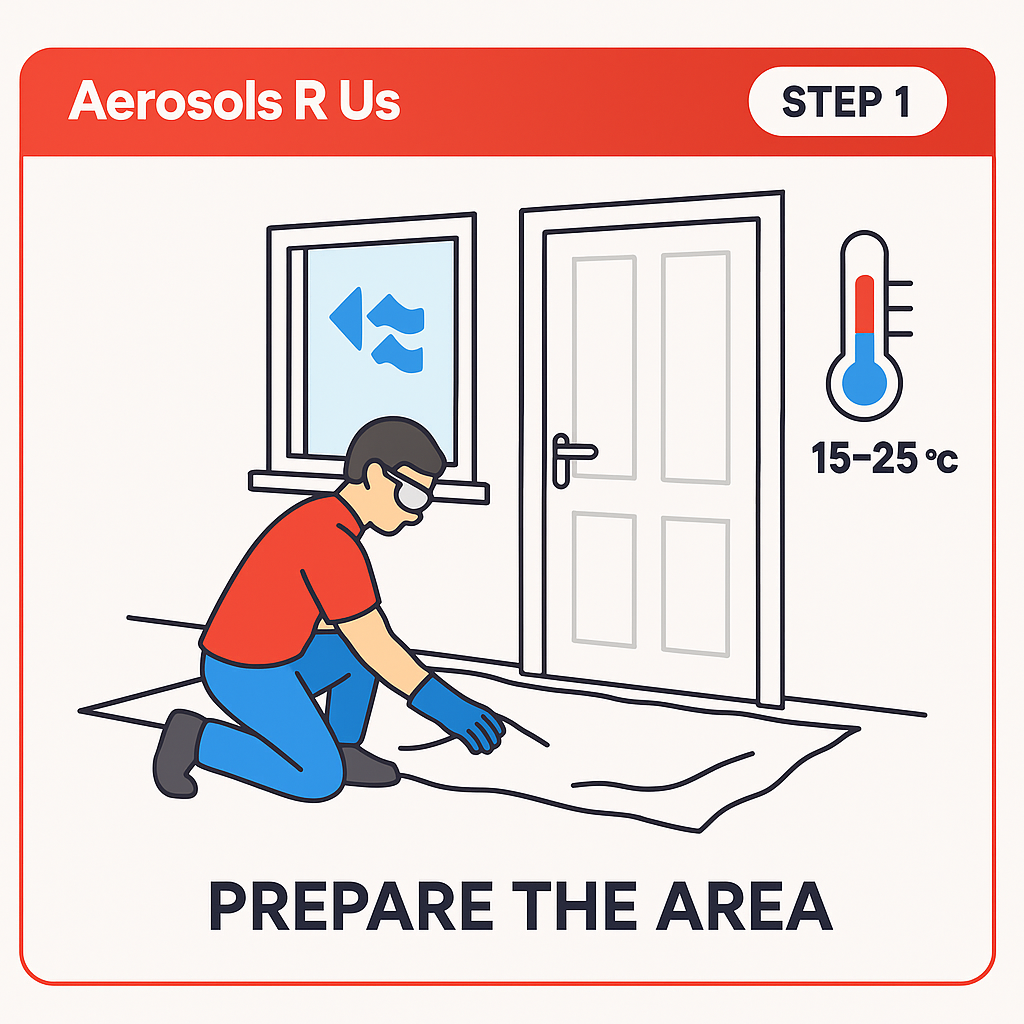
Step 1 – Prepare the area
Clear the workspace and lay down dust sheets to protect surroundings. Ensure good ventilation and that the temperature is 15–25 °C. Remove or mask any nearby items that could catch overspray.
-
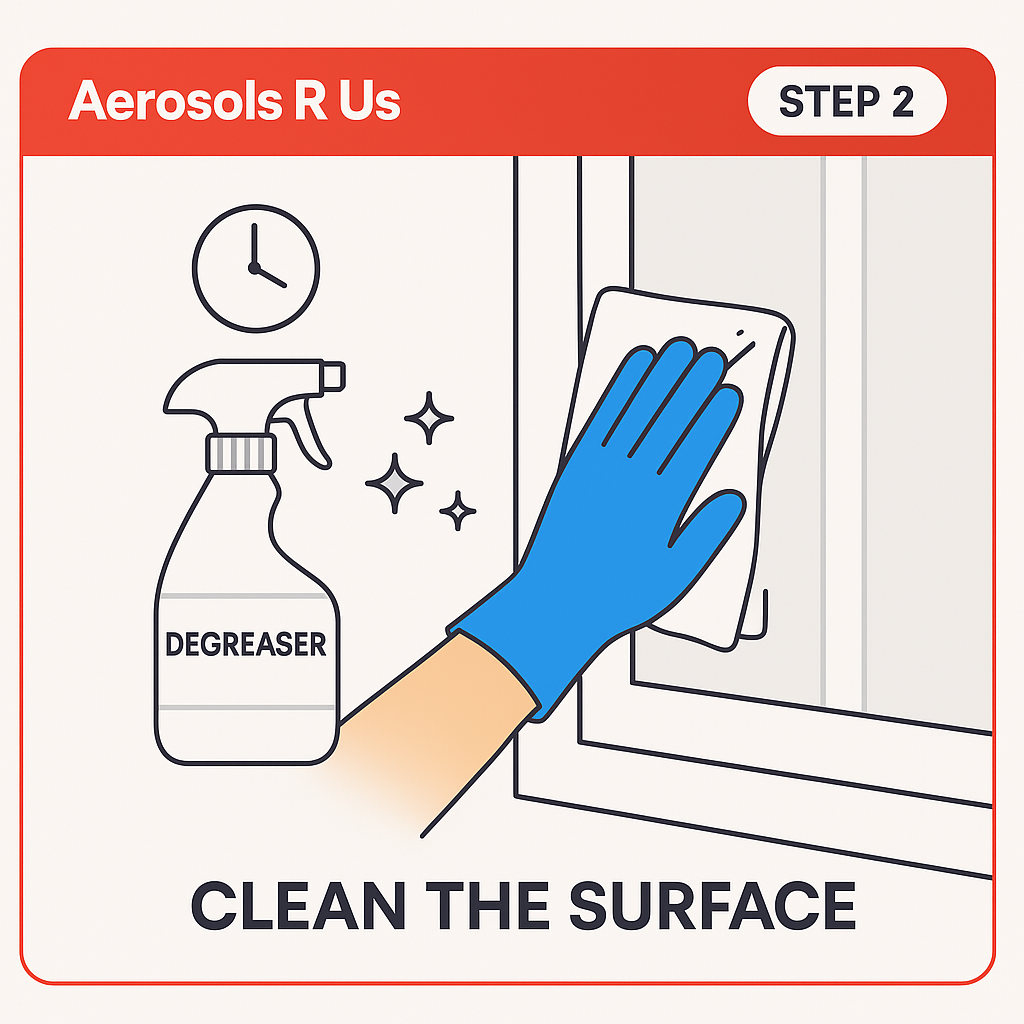
Step 2 – Clean the surface
Wipe the UPVC with degreaser to remove contaminants, silicone, and dirt. Finish with a lint-free cloth. The surface must be completely dry and grease-free before proceeding.
-
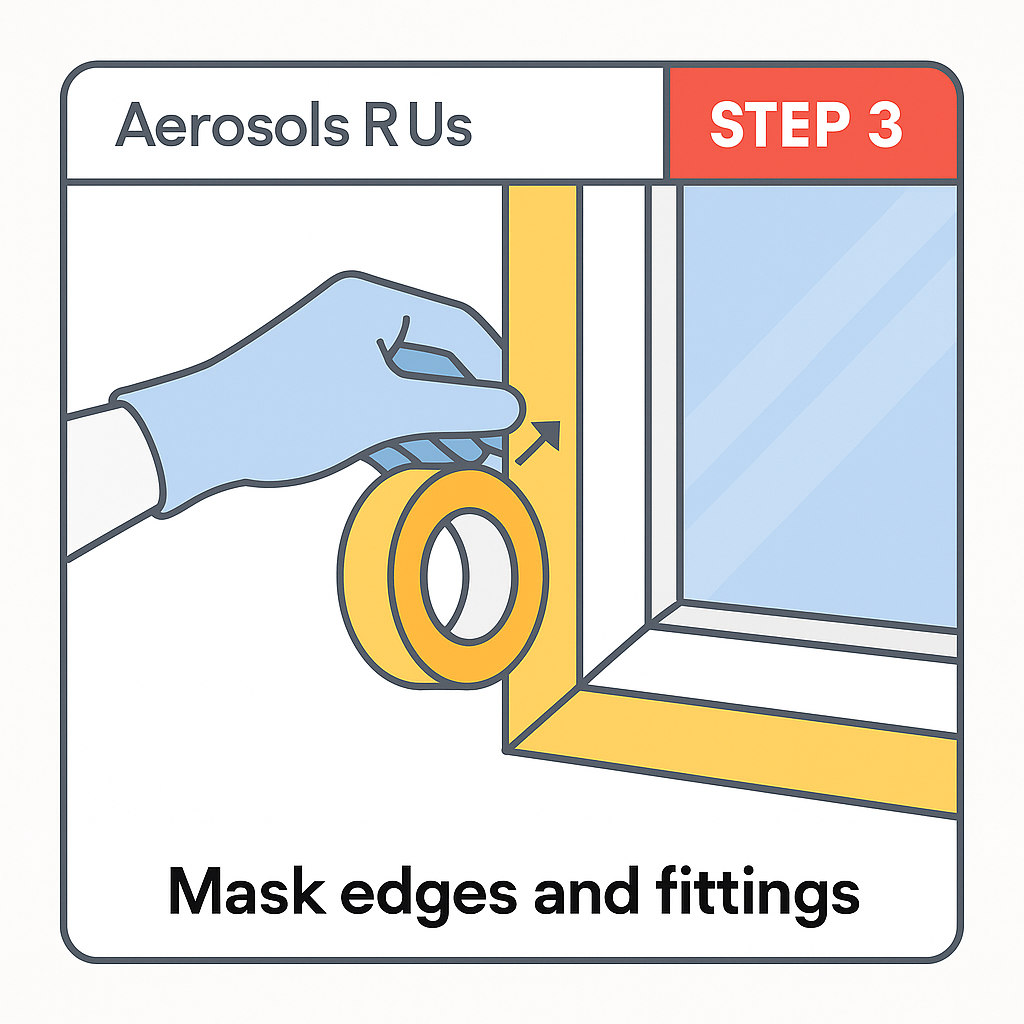
Step 3 – Mask edges and fittings
Use high-tack painter’s tape to cover all glass, rubber seals, handles, and hinges. Press the tape edges firmly to prevent paint bleed. Double-check corners and frame joints.
-
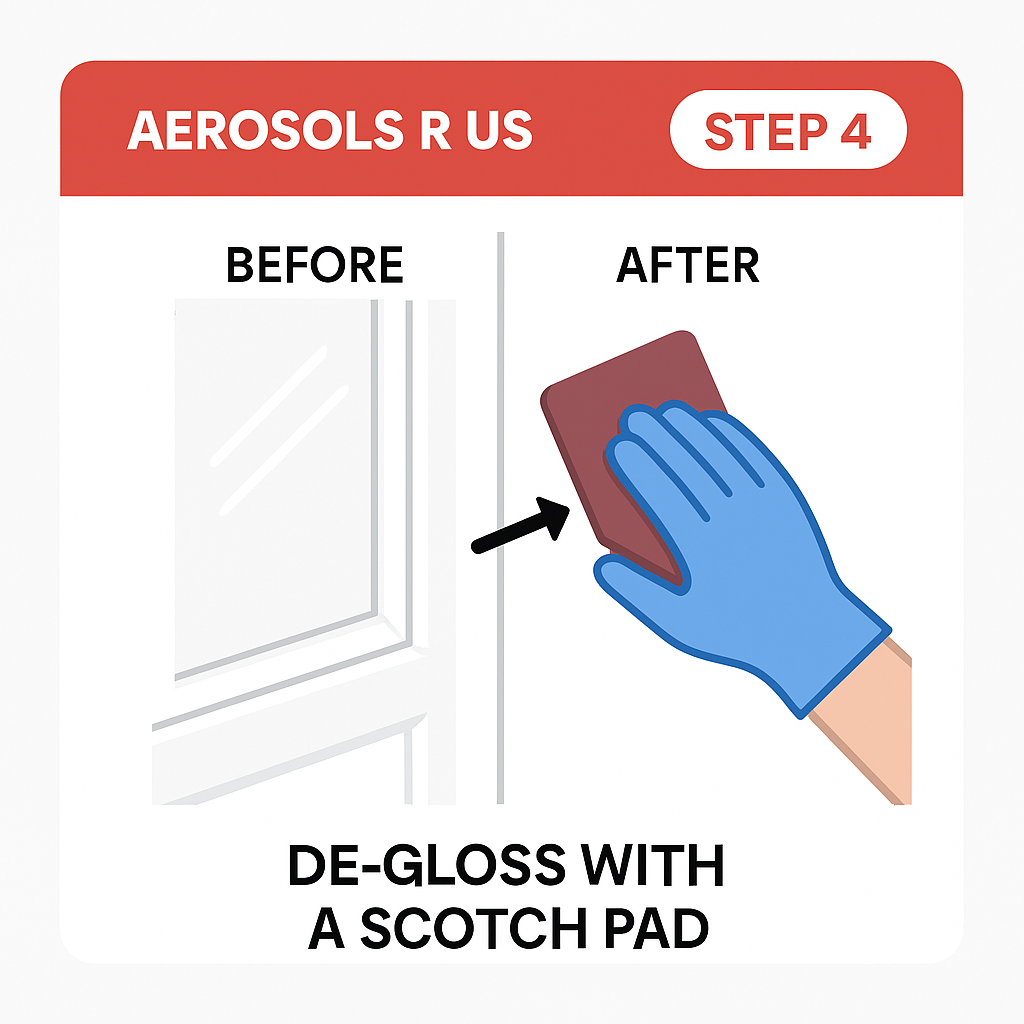
Step 4 – De-gloss with a Scotch pad
Rub the entire surface evenly until the sheen disappears. Focus on corners and edges. Vacuum or blow off dust, then wipe with a tack cloth for a perfectly matte finish.
-
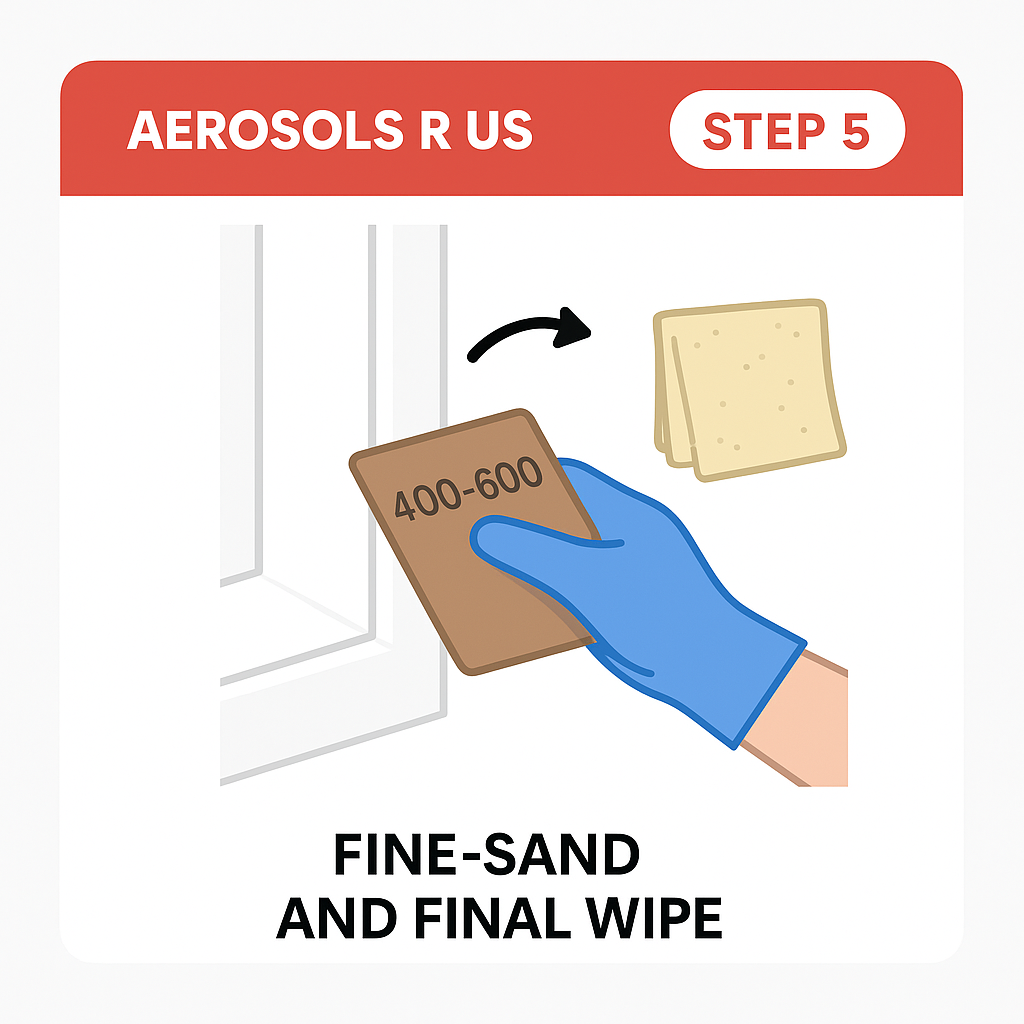
Step 5 – Fine-sand and final wipe
Lightly sand using 400–600 grit paper for consistent texture. Wipe clean with a tack cloth to remove residue. This promotes optimal primer adhesion.
-
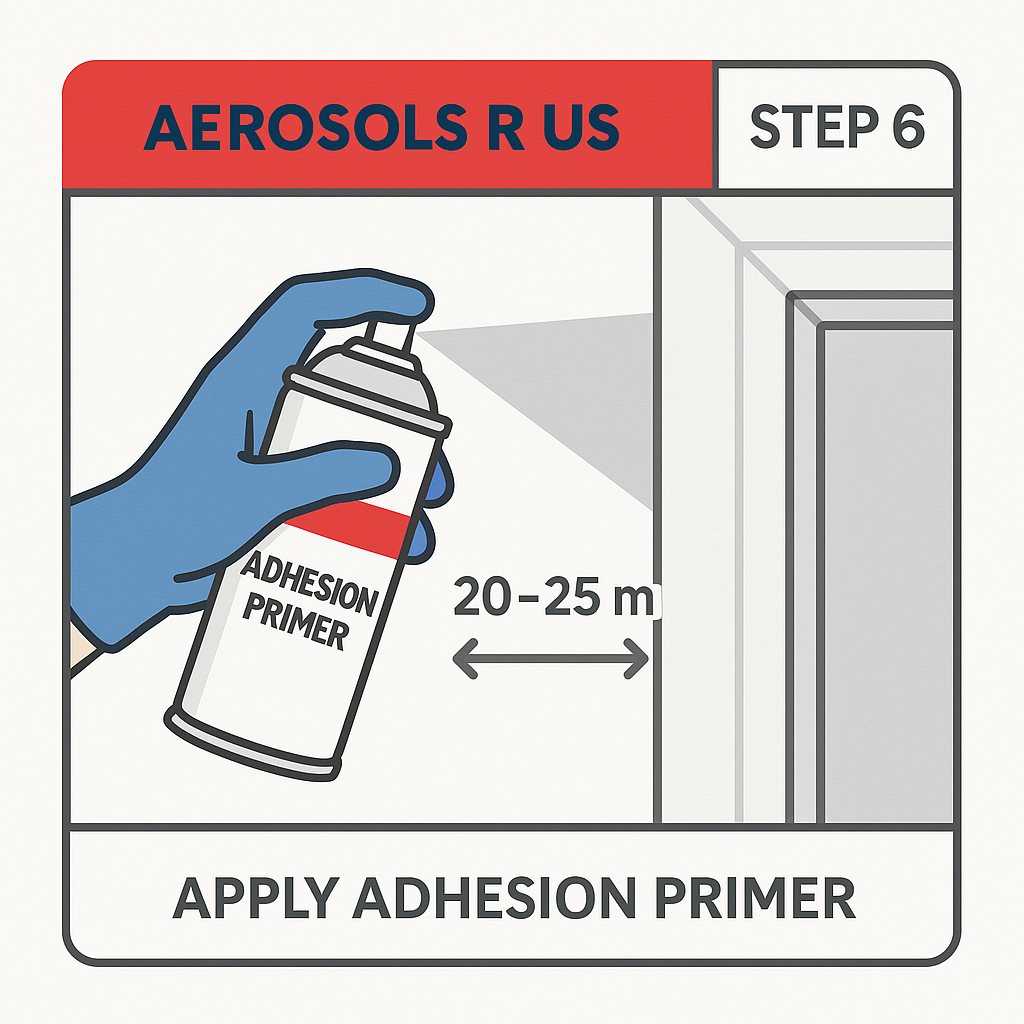
Step 6 – Apply adhesion primer
Shake the can for 2 minutes. Spray from 20–25 cm away in overlapping passes. Apply 2 light coats, allowing 10–15 minutes flash-off between them. The primer should appear smooth and even, not glossy.
-
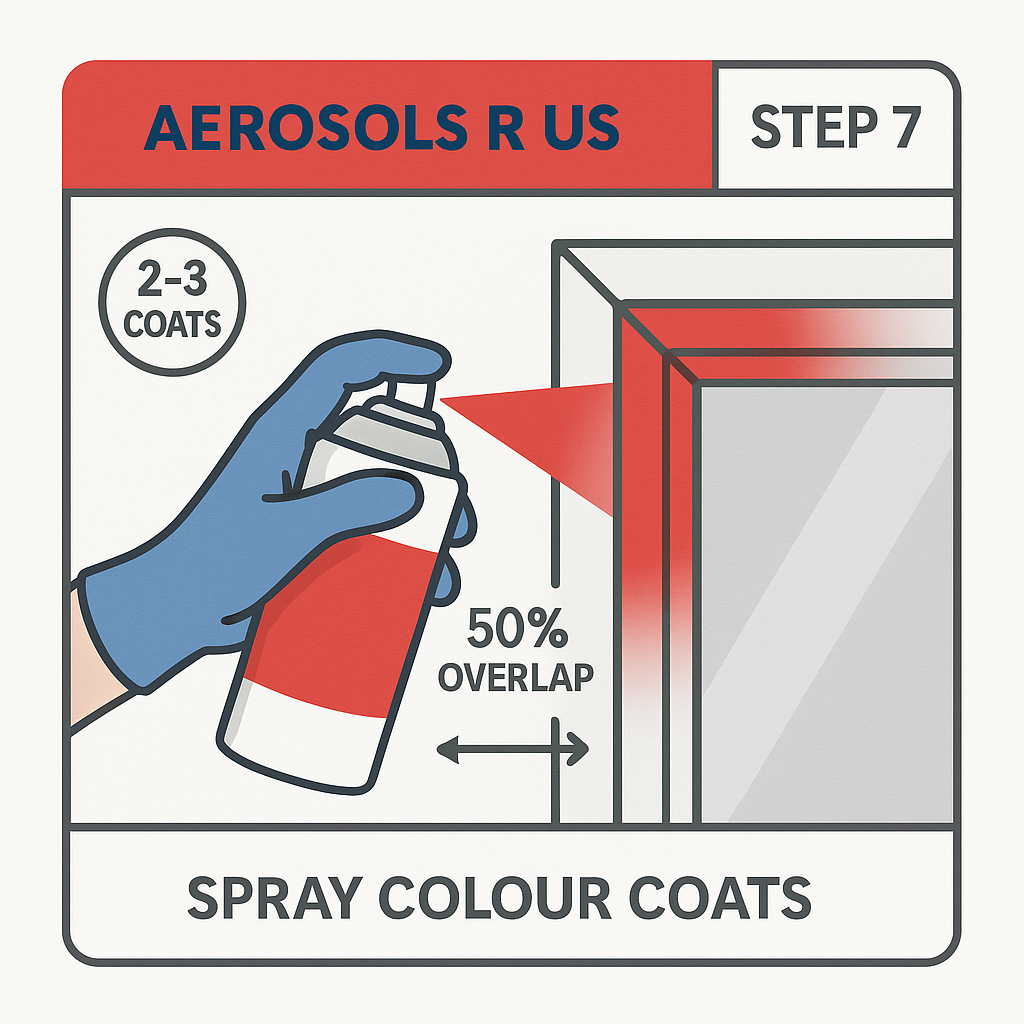
Step 7 – Spray colour coats
Shake your colour can well. Apply 2–3 light coats at 20–25 cm distance with 50% overlap. Move steadily and evenly. Allow 10–15 minutes between coats. Avoid heavy passes that can cause runs.
-
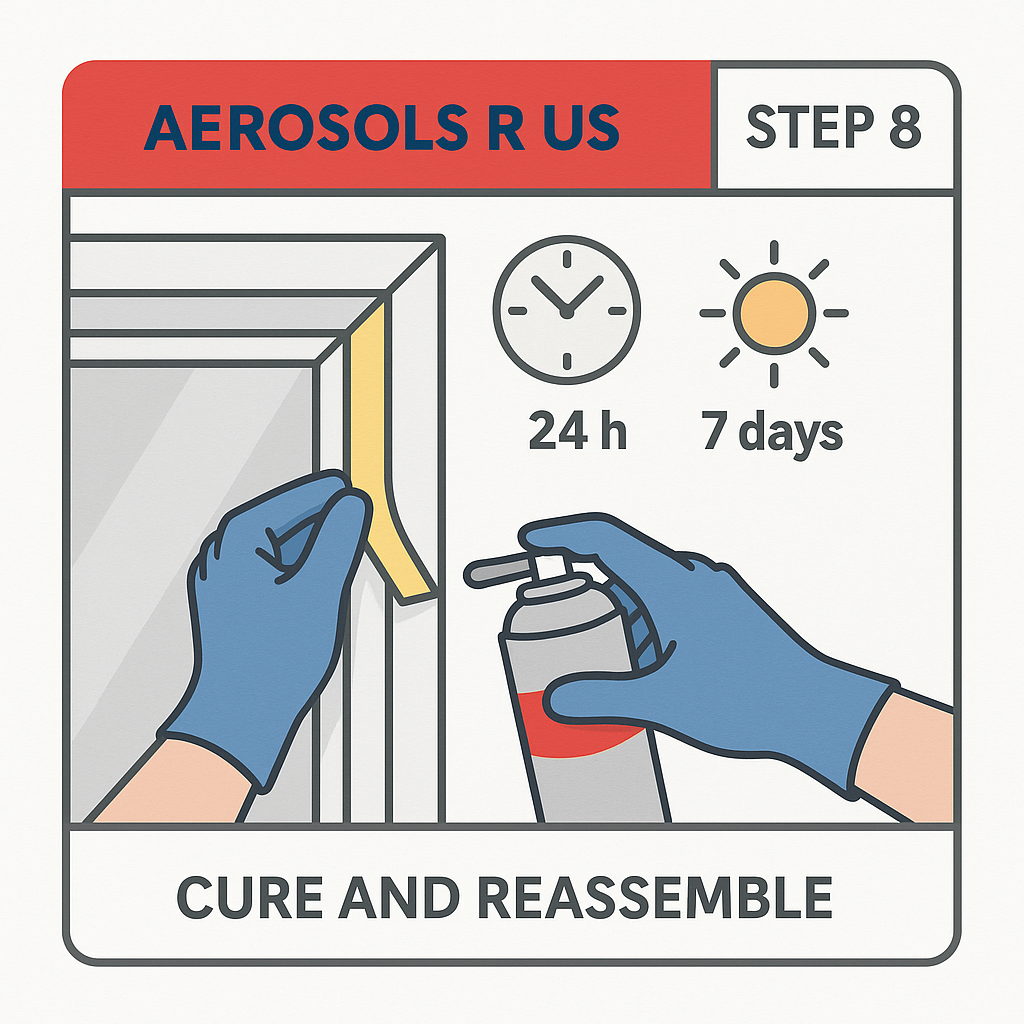
Step 8 – Cure and reassemble
Let the paint cure for 24 hours before handling, and 7 days before full exposure to weather. Carefully remove all masking. Clean glass edges with a plastic scraper if needed, then refit handles and trims.
Aerosols "R" Us
How to Spray UPVC windows - Using Aerosol Spray Paint
How to Spray UPVC windows - Using Aerosol Spray Paint
Couldn't load pickup availability
How to Spray Paint UPVC Windows and Doors Using Aerosols.
Transform old or discoloured UPVC windows and doors with a smooth, professional spray finish — no trade skills needed. In this guide, we’ll show you how to clean, prep and spray UPVC using aerosol paints for a long-lasting finish. At the end, you’ll find all the recommended products and safety essentials.
🧼 1. Clean the Surface Thoroughly
Purpose:
Remove dirt, grease, grime, and any surface contaminants.
Instructions:
Use a uPVC cleaner or methylated spirits on a clean cloth.
Pay close attention to the edges, corners, and around the glazing bead.
Avoid using washing-up liquid or household cleaners as they can leave a residue.
🔧 Tip: A toothbrush or detail brush is great for getting into tight edges.
🧲 2. Remove or Mask Off Hardware
Purpose:
To prevent paint from covering unwanted areas and achieve a neat finish.
Instructions:
Remove handles, locks, and other hardware if possible.
If removal isn’t feasible, mask them thoroughly using decorator’s masking tape and masking film or sheets for adjacent surfaces like brickwork and glass.
🧽 3. De-gloss and Abrade the Surface
Purpose:
Create a textured surface so that the paint bonds effectively.
Instructions:
Use a fine abrasive pad (e.g., Scotch-Brite) or 600-grit sandpaper.
Lightly rub the entire surface — the aim is to dull the sheen, not remove the material.
Ensure consistent abrasion across the frame without gouging the uPVC.
🧴 Important: Don’t skip this step — even specialist uPVC paints require a key to bond.
🧹 4. Clean Again to Remove Dust
Purpose:
Ensure a dust-free, contaminant-free surface before painting.
Instructions:
Wipe the surface using a tack cloth or microfiber cloth.
Alternatively, use a vacuum with a soft brush nozzle around the frame.
Optionally, follow up with another wipe-down using methylated spirits.
📐 5. Mask Off Surrounding Areas
Purpose:
Protect areas like brick, render, glass, and seals from overspray.
Instructions:
Apply high-quality painters tape along the edges of the uPVC.
Cover windows with masking film, newspaper, or plastic sheeting.
Use precision tools like a blade to trim excess masking material for clean lines.
✅ Final Check Before Painting:
✔ Surface is matte, clean, and dry.
✔ No loose hardware or contaminants remain.
✔ Everything not being painted is protected.
Share
